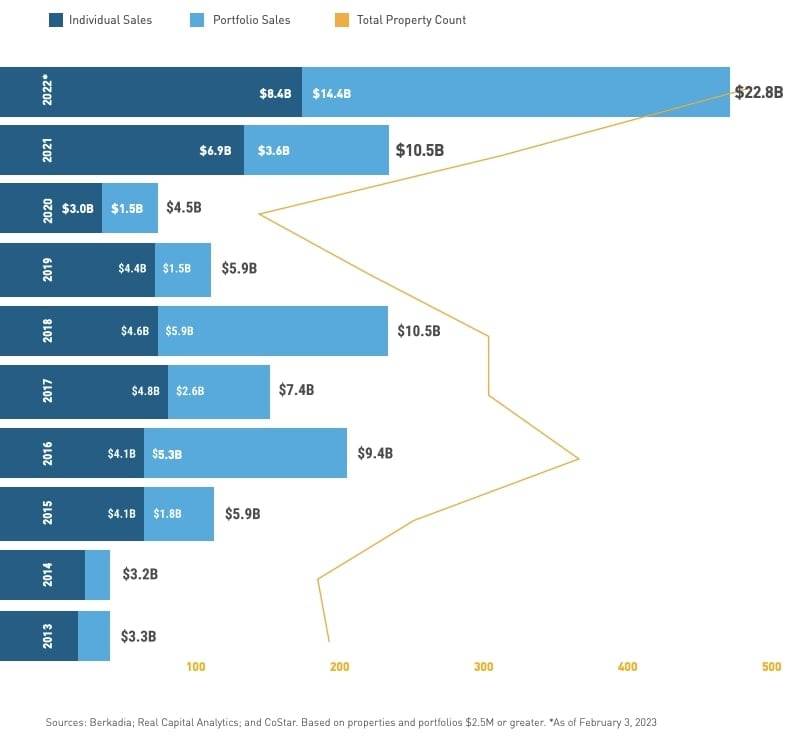After the real estate crash in 2008, pretty much any sort of real property became a pariah amongst investors—institutional investors at least—for a few years. However, one of the first sectors to bounce back was student housing.
Just one year after the crash (July 2009), Reuters was already noting how “investors are turning to the student accommodation sector as a would-be phoenix rising from the ashes of the property market, promising growth in returns and size for at least the next few years.”
That was for Britain. But The New York Times noted that on our side of the pond:
“Even through the recession and the housing crisis, student housing development has remained robust, outperforming other sectors, in part because the rising college student population increased the demand for accommodations.”
My father started his business in student housing around the University of Oregon, and it’s most certainly a very lucrative real estate niche. Universities provide student housing with consistent demand, and due to the nature of college life, you can usually rent properties by the room instead of on the whole, which allows you to charge a premium. (Although, in all honesty, dealing with college students can be a bit of a pain.)
Even still, my dad has been quite surprised by just how much student housing has been built since 2010 or so in Eugene, Oregon. Many other places have a similar story to tell.
The 2023 Student Housing Market
While the real estate market as a whole has remained mostly stable since interest rates started going up last year, that hasn’t been true for every sector. Most notably, commercial real estate has struggled—in particular, office space, specifically downtown office space, and with extreme precision, downtown office space in large, urban coastal cities.
Retail has also flailed a bit. Industrial and apartments have done okay.
But as it was after 2008, student housing has stood out despite the rash of building in the last 10 to 15 years. As The Wall Street Journal points out,
“Rents for student housing are poised to grow, boosted by limited supply and strong demand at many colleges, especially top research universities and schools in the five highest-earning athletic conferences for U.S. college football.”
This is even more interesting because after skyrocketing in the early 2010s, college attendance has actually been declining since then (down from 21 million to 19 million students.)

That being said, the total number of students attending college is not the most important figure when it comes to student housing investing. This is because student housing doesn’t really exist around commuter colleges, i.e., smaller schools, community colleges, schools with part-time programs, for-profit colleges, and the like—in other words, colleges where students don’t tend to live on or very close to campus.
And as The Wall Street Journal also pointed out, “Although college enrollment declined 1.1% last academic year, it increased for universities in the highest-earning athletic conferences and those with well-regarded research programs.”
Therefore, the universities where student housing is prominent have generally increased enrollment, and thus, not surprisingly, student housing is outperforming other types of apartments and other sectors of commercial real estate.
It’s also interesting just how much activity there’s been in student housing of late. According to Berkadia, in 2022, sales volume more than doubled in 2021 and more than quadrupled in 2020. Some of this is just pent-up demand from COVID and the lockdowns. But even still, the $22.8 billion sold in 2022 is more than twice as much as any year in the past 10 (with 2021 and 2018 tying for second at a mere $10.5 billion).

Of course, it’s unlikely such a trend will continue, and sales should come down in 2023. Still, sales in general should remain quite strong. Cap rates for student housing continued falling even after rates started going up in mid-2022. By year’s end, the average cap rate on student housing apartments was 4.9, 20 basis points lower than at the end of 2021. As Berkadia sums up, “We expect this positive trajectory to continue into 2023.”
Should You Invest in Student Housing?
Student housing isn’t available in every city, and you need to know what you’re doing to get into it. Again, many colleges don’t really have student housing for the reasons noted. Trying to make student housing happen near one will backfire. And even around colleges that do, novice investors may miss that students only live on one side of campus or won’t consider properties outside a mile from the university or other peculiarities of that particular market.
That being said, in a time when high interest rates are making many once-profitable niches far less lucrative than before, student housing stands out. As noted, many commercial sectors, particularly office, have been hammered. And one popular forum thread on BiggerPockets is bluntly titled: The BRRRR method is dead.
Of course, that is hyperbole. You can still BRRRR in this economy. But I would be lying if I were to say it wasn’t much harder than it was a few years ago.
Of course, equity deals and flipping are still alive and well. But overall, this market is a challenge, to say the least.
Thus, student housing is a market worth considering. It has a long track record, consistent demand, and the potential for higher-than-normal rents, and it’s still going strong in a wobbly and very odd real estate market.
Ready to succeed in real estate investing? Create a free BiggerPockets account to learn about investment strategies; ask questions and get answers from our community of +2 million members; connect with investor-friendly agents; and so much more.
Note By BiggerPockets: These are opinions written by the author and do not necessarily represent the opinions of BiggerPockets.
